|
The health benefits of cycling are endless. For a lot of people, not being able to cycle or exercise regularly massively affect their health and quality of life. To be fit and healthy you need to be physically active. Doing regular cycling and regular exercise can help improve physical fitness, ease mental stress (with the rush of the endorphins and ‘feel-great’ chemicals that will be released), and it’s also a great way to reduce your weight, not to mention to see some nice sights if you pick a scenic route. We’ve been celebrating national cycling week, and for lots of patients at Body Balance Physical Therapy, this type of aerobic exercise (cycling) is a key part of their healthy lifestyle. Lots of people aged 50+ prefer cycling to run, as it has a lot less impact on your body. Riding your bicycle regularly is one of the best ways to reduce your risk of health problems associated with a sedentary lifestyle. If you’re having regular problems with arthritic knees or hips, a really stiff lower back, or even tightness of muscles such as Achilles and calves, then cycling is a great option, and you’ll likely benefit from doing it more often. Bike riding is a low-impact exercise that can be enjoyed by people of all ages but is something that anyone in their 50s or above who is looking to be more active should seriously consider. It offers an alternative to pounding streets and it’s even better than walking if you’re objective is to stay active and healthy. Watch this great video about bone and joint health with Dr. Nathan Everett DPT. To watch more of our helpful tips and tricks to stay healthy visit our Facebook page now at ...... www.facebook.com/BodyBalancePhysicalTherapyLakeway The health benefits of regular cycling include…
Cycling is a low-impact exercise, as it causes less strain and injuries than most other forms of exercise. It’s a fun way to get fit, and if done outside you can enjoy some beautiful scenery. Cycling to work, to the shops, or to meet friends and family, is also one of the most time-efficient ways to combine regular exercise with your everyday routine. You’ll feel a lot healthier if you vary your exercise habits and training or fitness plans and remain alert to the impact that doing the same thing night after night is having on joints and muscles (it’s nearly always negative). This type of regular exercise can be as intense as you want– cycling can be done at very low intensity, to begin with, if recovering from injury or if you are feeling unfit, but can be built up to a more intense physical workout. Here are some facts on bike riding vs running…Now let’s abolish a myth about bike riding: many people think that to have the same positive impact on your health as say going for a run, you have to do much more when riding a bike. I’ve found this confusion to be one of the most common objections when I suggest people should consider cycling. It’s true that to get the endorphins and the feel-great rush you’re wanting from exercising, you do have to sit on your bike for a bit longer than if you were just going to head out for a run. However, cycling is a good overall muscle workout as it uses all of the major muscle groups as you pedal. Someone who weighs approximately 12 stone will burn roughly 650 calories from doing an hour’s bike riding. With a typical 20-minute run, you will probably be lucky to burn 200. So, although it might not feel that way, you’re working just as hard, only much more safely in terms of the reduced impact on your knees and hips. Something to think about. When the numbers stack up like this, you can see why more and more people aged 50+ are getting back on their bikes to keep healthy and feel and look great. Do you enjoy cycling? Maybe you cycle to stay active, cycle for a hobby, or you might even cycle to work? We help lots of patients in the clinic that are struggling with aches and pains, but that love to cycle and are eager to get back in the saddle… especially with the weather being so glorious right now. Here’s a 5-star Google review from one of our past patients. "It’s always the best thing when a professional looks you in the eyes and says “we can help you”. I trust Body Balance 100%. I recommend them as an athlete and someone who wants to get back to an active life ." One of the things we hear from patients a lot is that an injury is stopping them from doing the hobby they enjoy most with their partner or friends, or it stops their cycling to work fitness routine. Not exercising regularly can really impact a lot of things.
At Paul Gough Physio Rooms, we try to get people back to doing the things they enjoy doing most, as quickly as possible, to help with both their fitness and mental health. Physio can be the bridge between being injured and getting back doing the things that keep you active and healthy. If you’re reading this now and feel like you can relate, or if you want to get back to fitness and good health now lockdown measures are eased, we are here for you. Our fantastic team would love to listen to your concerns and give you some advice or answer any questions you have. Please call us on (512) 261-8699 to make a no-obligation inquiry. P.S. Do you know someone with aches in their knees, hips, or a really stiff lower back? Who do you know that is always telling you about their aches and pains? We would love to help them live a pain-free life too. That person could be someone who you live with, work with, or an extended friend or family member, who is maybe suffering from some kind of ache or pain that we can fix. It might even be someone you enjoy cycling with. Even better, if you refer someone to come and see us at the clinic, you’ll be entered into our ‘Referral for Rewards’ prize draw, to say a huge thank you.
1 Comment
Shoulder Pain: What You Can Do To Ease It If You’ve Been Putting Up With It For Weeks… Let’s talk about shoulder pain, and the most common cause most shoulder injuries share in common – overuse. Now, when it comes to aches and pains, there are just two ways that bring them on. 1. You can have an accident [Ouch!!] With an accident... for example you could have a fall or have a collision. You know exactly the moment it happens as there’s an incident that happens that’s usually accompanied by a pain that makes you want to yell and curl up into a ball We call this type of pain – acute pain. 2. Is related to something you’re doing that causes annoying, persistent pain that just won’t go away. This is the most common one we see here in the clinic, and we call this chronic pain. Chronic shoulder pain is identified as pain that’s always there. It’s the reason you go to grab your shoulder after lifting something heavy or when you go to reach for something in the back of the cupboard, and isn’t always put down to one particular movement or activity. Those who have this type of shoulder pain often feel doomed, as if they were just plagued with bad shoulders. But here’s the thing, there’s simple ways to ease it, and to help fix it! The faster you book an appointment, the faster you get to being PAIN FREE! Schedule an Appointment Now with us at no risk! Let me tell you a quick story about a patient we saw a few weeks ago… Bill, 52 from Lakeway, came to us after struggling with chronic shoulder pain for a whole six months… He played Golf at a high level, so having to put up with shoulder pain every day was beginning to affect his performance and get in the way of his “range- time”/ practice sessions. Not good when he was heading into tournament season and his playing partners were depending on him! After a few weeks of hands-on physical therapy with massage and personalised exercises, Bill returned to the course, able to play 18 holes, multiple days in a row without pain [ or the need of anti-inflammatory meds] ! But even if you’re not involved in a sport like Bill, this doesn’t mean chronic shoulder pain like this isn’t happening to you (or won’t either)… This same type of shoulder pain can be caused by all sorts of things – ironing, painting, a job where you have to lift heavy objects, and even from sitting hunched over at a desk all day. So what can you do about it if it’s happening to you (or if it suddenly comes on)? Well first, I want you to know that ‘overuse’ doesn’t specifically mean doing an activity ‘too much’ (so I’m sorry to say it, but something like ironing isn’t the culprit of your bad shoulder!). Overuse actually means doing an activity the ‘wrong way’ too much. Let me explain… In Bill’s case, he was performing a shoulder exercise in the gym to enhance his golf performance, using bad body mechanics while in the wrong position – which we discovered was causing his shoulder pain in the first place! But gym and exercises aside, it could just be that you could have weak muscles in your arms, back and shoulders, poor posture when sitting and standing, or you could have even spent most of your life sleeping in an awkward, twisted position! Whatever it is, all of these things can be the culprit of nagging shoulder pain. So let’s look at some ways you can ease irritating, daily shoulder pain that disturbs your sleep and gets in the way of almost everything you do… Use Ice And Heat
Whenever you’re feeling achy or painful, such as at the end of a very busy day, ice is by far the best way to ease the pain. Apply an ice pack for ten minutes or so [little, but very often, like every 1-2 hours]. And when to use heat? When you wake up in the morning the muscles are likely to be a little stiff and cold from not moving all night, applying a hot pack will help you move your shoulder with more ease. Again ten minutes should do it. How Do You Sleep?
Hands On Physical Therapy And lastly, if you’ve been putting up with the pain for several weeks now, (even months), getting some hands-on treatment is going to help ease the pain fast. In fact there isn’t a faster way to ease shoulder pain than by going to see a Physical Therapist… Physical Therapy will be able to soothe and relax tight aching muscles, as well as give you personalised exercises that will help strengthen your muscles and make sure your posture is perfectly aligned. Combine all these tips along with a trip to see a Physical Therapist, and you will feel a dramatic drop in the pain you’re currently suffering from. These are only a few recommendations to try. If you would like more information, you have a couple of options. Download our Shoulder Report: The 7 Ways To (…Naturally) STOP! Annoying, Daily, Irritating Neck And Shoulder Pain…From Disturbing Sleep And Causing Severe Headaches! OR… Phone the clinic (512) 261-8699 and speak to one of our Specialist and see of Physical Therapy is right for you. THE IRON WILL APPROACH Whether you’re a recent grad, weeks from graduating to maintenance, or new to Ideal Protein, we all have choices. In a perfect world, we would all choose the “Iron Will” approach, eating nothing that would compromise fat burning. Good candidates for this “Iron Will” approach are individuals who are very new to the program and haven’t mastered a strong set of healthy eating habits. Also, for those with only a few weeks left on the program, following the “Iron Will” approach will ensure you meet your goal when expected. Otherwise, you will extend your time on the program by ~1-2 weeks by eating foods that would compromise your fat burning. Be sure to keep that in mind. If you’re celebrating outside of your home, bring a large platter of veggies and some Walden Farms, big mixed greens salad, packets of mangosteen or chat with us at your next visit for some other creative side that is IP friendly. Click here to learn more about our Ideal Protein program! If you plan to use the “Iron Will” approach, here are some key phrases you can use to excuse yourself politely from eating things you don’t choose to eat: The Crafty Dismissal: “Ooh, that looks delicious! I’m stuffed so I’ll just have to take it home for later.” (Then store it in your freezer ‘til graduation day) The Firm Hand: “Thank you for respecting the fact that I have some personal goals I am working on, and, while that looks delicious, it would compromise my goals so I’ll have to wait. Thanks!” The Medical Excuse: “My doctor recently told me I am pre-diabetic. I really have to watch out for foods that spike my sugar levels. I’ll have to pass.” The Allergy Excuse: I recently found out I am allergic to that! No thanks!” Many have used this many times and it works!! The one question you might get is, “Wow, what happens when you eat it?” and your response can be as simple as this. “You don’t even wanna know!” That’ll stop the conversation right there. THE ONE DAY PASS APPROACH
Thanksgiving and Christmas come once a year and there will be a number of dieters who feel they’ve earned a day off Ideal Protein. If you choose this approach, here’s how we’d like you to proceed if you choose this. 1.Moderation is KEY. Let’s not undo all the healthy habits we’ve built on this program. Practice regulating portion sizes- eat only 1-2 teaspoons of your favorite holiday foods and do not go back for seconds. Skip the cookies and pies- they’re so full of fat and fast-acting sugar-- it’s not worth it. Plus, if you don’t moderate, you may feel very sick the next day…ew! If you plan to use your pass, talk to your coach about entering Phases 2 and 3 prior to the day of slip-up. 2.The “One Day Pass” is just that- ONE DAY ONLY. You are not authorized to spend the whole week of Thanksgiving eating this way. It’s not healthy and it’s destructive to all the new healthy habits you’ve worked so hard to build- don’t undo all your hard work! If you plan to use your pass, talk to your coach about entering Phases 2 and 3 prior to that day. 3.If you use the “One Day Pass” you must go to boot camp the next 3 days following Thanksgiving. This means ultra-low-carb veggies and NO restricted food items (bars, puffs, ridges, etc.) Your pancreas needs to rest and recuperate from the holiday foods, PLUS this will get you back into ketosis quicker. Call (512) 261-8699 to set up an appointment and get your health on track now! To learn more about how our Neurological specialist can help you click here!Neurologic Physical TherapyMany of our patients are surprised to hear about how easy it can be to pull a muscle… especially when you do something as simple as sneezing! Have you ever pulled a muscle? Chances are you have… and when you do, believe me, you’ll know about it! Most people, including myself, don’t realise how detrimental pulling a muscle could be to our everyday lives. In this blog post, you’ll discover just some of the ways you can pull a muscle… including how easy it is to pull a muscle and how to help yourself relieve the excruciating pain. Sneezing, turning your neck suddenly, sleeping in an awkward position, moving to pick something up or even reaching for something that’s tricky to get to – are just a few of the things you can do every day to pull a muscle. So... What Actually Happens When You Pull a Muscle? Pulling a muscle is something I’m sure we’ve all done before… whether we’re done it badly and it’s stopped us from doing the things we love, or we’ve had a mild sprain and suffered some discomfort for a couple of hours. When you pull a muscle, the pain can range from mild, like a minor neck strain you get from turning your head the wrong way, or the pain can be severe like a lower back injury that leaves you unable to walk for days. You might experience a sudden onset of pain, soreness, bruising, stiffness, swelling and many more. Pulling a muscle is often the term for something called a “grade 1 strain”, which is when you tear about 5% of the fibers in your muscle… causing the uncomfortable twinge we all know and hate. Sounds scary… doesn’t it? It doesn’t have to be, especially when you know how to help yourself. Can I Pull A Muscle From Sneezing? Believe it or not – yes. I remember a few years ago, the week before my birthday, I sneezed and pulled a muscle in my lower back. I was in so much pain and completely unable to walk; I had to use my office chair with wheels to support me when I was moving around my home. Don’t get me wrong, my family was very amused… but as embarrassing as it was, putting my back ‘out’ from sneezing makes total sense. Sneezing is a forced, sudden and uncontrolled movement that my body simply was not prepared for. It’s this kind of sudden movement that often results in a pulled or strained muscle, because the body is forced into an action that it’s not ready for. Whiplash Can Be a Great Example of Pulling your Back The sudden rapid back and forth movement of the neck causes strain to the neck muscles, leaving you feeling achy, and your neck too painful to turn properly. At the clinic, we typically see whiplash in patients after they’ve been in a car accident. But I was not surprised to see a patient who walked into the clinic with a badly strained leg after playing football with his grandkids – his muscles weren’t prepared and warmed up properly, so the sudden quick movement of kicking the ball came as a shock to his body, straining the muscle in his leg. Believe it or not, you don’t have to be a weightlifter or carrying anything heavy to pull a muscle. CLICK HERE to read our FREE Back Pain Guide… it’s filled with our top tips and tricks to help you help yourself at home. What Do I Do When I Pull a Muscle?
Helping to heal a pulled muscle is different for everyone because we all have different severities and different healing times. If the muscle pain is severe – the kind that really does stop you from walking, or turning your neck at all… then you should see someone. Do not mess around with severe injuries and try to treat them at home yourself, or it might last even longer! The advice that I’m about to give you is for mild muscle strain – the kind where you can still move, and you know you’ve done something wrong. As always, use your best judgement – go and seek help if you have any doubts whatsoever. What is the RICE recovery method? I’m going to break this down so you know what to do at all stages when you’ve pulled a muscle so you can get back to being 100% as soon as possible. As soon as you know you’ve pulled a muscle – I highly recommend you use the tried and tested ‘RICE’ method. This is a treatment that’s recommended to do within the first 24 hours of you pulling a muscle, and it can be a great way to help yourself. Rest This might be obvious. The first thing you need to do is stop whatever it is you did that pulled your muscle in the first place. I can’t tell you how many times I’ve seen people injure themselves (especially during exercise) and decide to just go ahead and push through the pain… Pushing through the pain is something that is guaranteed to make any injury worse. Ice A question I get asked a lot is ‘when do I use ice and when do I use heat?’ The sooner you apply ice, the better! Ice provides pain relief and helps minimise swelling, which is the primary purpose of ice. It’s best to think of ice as a pain-reliever. Do not apply ice directly to the skin, unless you want to deal with cold burns alongside a pulled muscle! Wrap this in a tea towel and then apply to the area. Compression Apply a soft bandage to the area to help support the pulled muscle and reduce the overall swelling, but make sure not to wrap the area so tightly that you restrict blood flow to the area. Use your judgement of what tight is too tight for your body! Elevation Whenever possible try and keep the injured muscle elevated, above the level of your heart when you can. You can use pillows to help raise the pain point whilst you rest. As a general rule, after doing the RICE method for a day, try and get moving as soon as possible the following day. I’m only talking about gentle movements that do not cause pain. If anything causes pain – stop this immediately and continue with the RICE method. How Can I Prevent Pulling a Muscle? You don’t always need to rush off to a pharmacy and buy the ‘magic cure’ to rub on muscles or take painkillers, there is almost always a natural solution out there waiting for you to try. Although the RICE method is not a guaranteed fix… it’s proven to help ease the pain and is a good place to start. But preventing injuries such as pulled muscles is a lot easier than you may think. Stay Hydrated By staying hydrated, you’re reducing the risk of cramp (which does cause muscle sprain) and you’re also looking after your blood sugar levels which can stop you feeling light-headed and dizzy! By staying hydrated, you’re helping both your muscles and other aspects of your health. Warm Up Properly One vital thing you can do to prepare yourself for any kind of activity (it doesn’t have to just be exercise) can be to stretch… Some simple warm up exercises can help elasticate the muscles and prevent further injury. Pace Yourself The last thing that you want to do is injure yourself… so remember not to do too much at once and listen to your body. Whether you’re lifting something heavy, weightlifting or simply playing with the kids and grandkids, too much of something is definitely not always a good thing. Move You can’t stretch your muscles without moving… Like I said further up, muscle strain is caused when your body is not prepared for a sudden movement. Try to build up your exercise and activity levels as weeks progress, this will allow you to build strength in your muscles and prevent things like muscle cramps, tension and aches. Try to get into good, healthy habits as soon as possible – starting today. In fact, you’ve picked one up already by reading this blog! In doing so, you’re going to give yourself the best chance of being active, happy, and healthy. We’re Here To Help… If you’re in pain and would like to talk to us about getting some help, some specialist advice, or if you are looking for a diagnosis, remember we are always here to help you. We are safely offering both face-to-face appointments. If you would like to get one of our limited slots, please click here to complete our enquiry form or CALL us on (512)261-8699 P.S. Do you know someone with aches in their knees, hips, or a really stiff lowerback? Who do you know that is always telling you about their aches and pains? We would love to help them live a pain free life too. That person could be someone who you live with, work with, or an extended friend or family member, who is maybe suffering with some kind of ache or pain that we can fix. It might even be someone you enjoy to cycle with. The first day back to school can not only be overwhelming for the students but overwhelming for the parents as well! This Health Blog will give you some quick tips on how to start your year off right. The best part is you don’t have to do it alone. At Body Balance Physical Therapy, we can help get you and your kids in the healthiest way to carry heavy back packs, picking up and setting down kids and supplies etc. We are here to help keep your body stay healthy and happy. The following health and safety tips are from the American Academy of Pediatrics (AAP). Backpack Safety
To help keep your back strong throughout the year click here to Schedule an Appointment Now. Make an appointment with one of our amazing physical therapist and let us create a personalized and tailored plan for your needs before the back pain becomes to much! Traveling To & From School Review the basic rules with your student and practice any new routes or modes of transportation: Bike
Walking to School
Eating During the School Day
To learn more about our nutrition program click here:Nutrition Develop a Sleep Routine
Making the First Day Easier
We have a great video below to show you a quick exercise you can do to strengthen your shoulder before coming in to see us. Like and share us on facebook www.facebook.com/BodyBalancePhysicalTherapyLakeway and our instagram page to stay up to date on the latests exercises, workshops, and special offers! Additional Information from HealthyChildren.org:
American Academy of Pediatrics (Copyright © 2017) The information contained on this Web site should not be used as a substitute for the medical care and advice of your pediatrician. There may be variations in treatment that your pediatrician may recommend based on individual facts and circumstances. Ataxia is a movement disorder caused by problems in the brain. When you have ataxia, you have trouble moving parts of your body the way you want. Or the muscles in your arms and legs might move when you don’t want them to. The word ataxia actually means “without coordination.” Ataxia isn’t a disorder or a disease itself -- it’s a sign of other underlying disorders or diseases. Doctors have discovered anywhere from 50 to 100 different ataxias. They are grouped into categories based on what causes them, or based on which part of the body they affect. How can Body Balance Physical Therapy help you? We have a Doctor of physical therapy that is a specialist in Neurological conditions who can help you build your strength and maintain independence. It doesn’t matter what stage you’re in, physical therapy WILL MAKE A DIFFERENCE! To learn more about our specialist and how we treat click here Neurologic Physical Therapy. Here are some of the different types of Ataxia. Reading through this can help give you a broader knowledge of what type you have or what more specific question to ask your doctor to get a proper diagnosis. Once you are diagnosed the best thing you can do next is ask your doctor for a prescription for physical therapy. The sooner you get help, the stronger you will be! Cerebellar Ataxia Your cerebellum is the part of your brain that’s in charge of balance and coordination. If part of your cerebellum starts to wear away, you can develop cerebellar ataxia. Sometimes it can also affect your spinal cord. It’s the most common form of ataxia. Symptoms of cerebellar ataxia include: Sensory Ataxia Sensory ataxia is the result of damage to nerves in your spinal cord or your peripheral nervous system. That is the part of your nervous system outside of the brain and spinal cord. When you have sensory ataxia, you have less sensation in your feet and legs from the nerve damage, so you have less feedback from your brain telling you where your body is in relation to the ground. It’s also called proprioceptive ataxia. Symptoms of sensory ataxia include:
Vestibular ataxia affects your vestibular system. This system is made up of your inner ear and ear canals, which contain fluid. They sense the movements of your head and help with your balance and spatial orientation. When the nerves in your vestibular system are affected, you can have the following problems:
WebMD Medical Reference Sources © 2020 WebMD, LLC. All rights reserved. Jennifer Millar is a physical therapist who works with John Hopkins Medicine. She will show you the benefits of exercise for managing the symptoms of ataxia. She will further describe and demonstrates the exercises that individuals with ataxia can do to improve their core strength and balance. Click here: youtu.be/BMhxywDhhrw
Welcome to Body Balance Physical Therapy & Sports Performance's health blog about Lumbar Spine problems. Knowing the main parts of your lower back and how these parts work is important so you can learn to care for your back long term. Two common anatomic terms are useful as they relate to the low back. The term anterior refers to the front of the spine. The term posterior refers to the back of the spine. The section of the spine that makes up the low back is called the lumbar spine. The front of the low back is therefore called the anterior lumbar area. The back of the lower spine is called the posterior lumbar area. This article gives a general overview of the anatomy of the low back. It should help you understand: what parts make up the low back and how these parts work. If your having lower back pain and you dont know where to start book an evelaution here Schedule an Appointment Now with one of our amazing physical therapist now!! IMPORTANT STRUCTURES Lumbar Spine Anatomy The important parts of the lumbar spine include: bones and joints nerves connective tissues muscles spinal segments. This section highlights important structures in each category. Bones and Joints The human spine is made up of 24 spinal bones, called vertebrae. Vertebrae are stacked on top of one another to form the spinal column. The spinal column is the body's main upright support. From the side, the spine forms three curves. The neck, called the cervical spine, curves slightly inward. The middle back, or thoracic spine, curves outward. The outward curve of the thoracic spine is called kyphosis. The low back, also called the lumbar spine, curves slightly inward. An inward curve of the spine is called lordosis. Three Curves in Spine The lumbar spine is made up of the lower five vertebrae. Doctors often refer to these vertebrae as L1 to L5. The lowest vertebra of the lumbar spine, L5, connects to the top of the sacrum, a triangular bone at the base of the spine that fits between the two pelvic bones. Some people have an extra, or sixth, lumbar vertebra. This condition doesn't usually cause any particular problems. Lower Vertebrae Each vertebra is formed by a round block of bone, called a vertebral body. The lumbar vertebral bodies are taller and bulkier compared to the rest of the spine. This is partly because the low back has to withstand pressure from body weight and from movements such as lifting, carrying, and twisting. Also, large and powerful muscles attaching on or near the lumbar spine place extra force on the lumbar vertebral bodies. A bony ring attaches to the back of each vertebral body. This ring has two parts. Two pedicle bones connect directly to the back of the vertebral body. Two lamina bones join the pedicles to complete the ring. The lamina bones form the outer rim of the bony ring. When the vertebrae are stacked on top of each other, the bony rings form a hollow tube that surrounds the spinal cord and nerves. The laminae provide a protective roof over these nerve tissues. Bony Ring A bony knob projects out at the point where the two lamina bones join together at the back of the spine. These projections, called spinous processes, can be felt as you rub your fingers up and down the back of your spine. Each vertebra also has two bony knobs that point out to the side, one on the left and one on the right. These bony projections are called transverse processes. The projections in the low back are broader than in other areas of the spine because many large back muscles attach and impart powerful forces on them. Between the vertebrae of each spinal segment are two facet joints. The facet joints are located on the back of the spinal column. There are two facet joints between each pair of vertebrae, one on each side of the spine. A facet joint is made of small, bony knobs that line up along the back of the spine. Where these knobs meet, they form a joint that connects the two vertebrae. The alignment of the facet joints of the lumbar spine allows freedom of movement as you bend forward and back. Facet Joints The surfaces of the facet joints are covered by articular cartilage. Articular cartilage is a smooth, rubbery material that covers the ends of most joints. It allows the ends of bones to move against each other smoothly, without friction. Articular Cartilage On the left and right side of each vertebra is a small tunnel called a neural foramen. (Foramina is the plural term.) The two nerves that leave the spine at each vertebra go through the foramina, one on the left and one on the right. The intervertebral disc (described later) sits directly in front of the opening. A bulged or herniated disc can narrow the opening and put pressure on the nerve. A facet joint sits in back of the foramen. Bone spurs that form on the facet joint can project into the tunnel, narrowing the hole and pinching the nerve. Neural Foramen Nerves The hollow tube formed by the bony rings on the back of the spinal column surrounds the spinal cord. The spinal cord is like a long wire made up of millions of nerve fibers. Just as the skull protects the brain, the bones of the spinal column protect the spinal cord. Spinal Cord The spinal cord extends down to the L2 vertebra. Below this level, the spinal canal encloses a bundle of nerves that goes to the lower limbs and pelvic organs. The Latin term for this bundle of nerves is cauda equina, meaning horse's tail. Between vertebrae, two large nerves branch off the spinal cord, one on the left and one on the right. The nerves pass through the neural foramina of each vertebra. These spinal nerves group together to form the main nerves that go to the organs and limbs. The nerves of the lumbar spine (cauda equina) go to the pelvic organs and lower limbs. Watch our very own Dr Nathan Everett, DPT explain how it all works togeather.Orthopedic & Manual Physical TherapyConnective Tissues
Connective tissues are networks of fiber that hold the cells of the body together. Ligaments are strong connective tissues that attach bones to other bones. Several long ligaments connect on the front and back sections of the vertebrae. The anterior longitudinal ligament runs lengthwise down the front of the vertebral bodies. Two other ligaments run full-length within the spinal canal. The posterior longitudinal ligament attaches on the back of the vertebral bodies. The ligamentum flavum is a long elastic band that connects to the front surface of the lamina bones (just behind the spinal cord). Thick ligaments also connect the bones of the lumbar spine to the sacrum (the bone below L5) and pelvis. Ligaments A special type of structure in the spine called an intervertebral disc is also made of connective tissue. The fibers of the disc are formed by special cells, called collagen cells. The fibers may be lined up like strands of nylon rope or crisscrossed like a net. An intervertebral disc is made of two parts. The center, called the nucleus, is spongy. It provides most of the shock absorption in the spine. The nucleus is held in place by the annulus, a series of strong ligament rings surrounding it. Two Parts of Intervertebral Disc Muscles The muscles of the low back are arranged in layers. Those closest to the skin's surface, the superficial layer, are covered by a thick tissue called fascia. The middle layer, called the erector spinal, has strap-shaped muscles that run up and down over the lower ribs, chest, and low back. They join in the lumbar spine to form a thick tendon that binds the bones of the low back, pelvis, and sacrum. The deepest layer of muscles attaches along the back surface of the spine bones, connecting the low back, pelvis, and sacrum. These deepest muscles coordinate their actions with the muscles of the abdomen to help hold the spine steady during activity. Low Back Muscles Spinal Segment A good way to understand the anatomy of the lumbar spine is by looking at a spinal segment. Each spinal segment includes two vertebrae separated by an intervertebral disc, the nerves that leave the spinal column at each vertebra, and the small facet joints that link each level of the spinal column. The intervertebral disc separates the two vertebral bodies of the spinal segment. The disc normally works like a shock absorber. It protects the spine against the daily pull of gravity. It also protects the spine during heavy activities that put strong force on the spine, such as jumping, running, and lifting. The spinal segment is connected by two facet joints, described earlier. When the facet joints of the lumbar spine move together, they bend and turn the low back. SUMMARY Many important parts make up the anatomy of the back. Understanding the regions and structures of the lumbar spine can help you be more involved in your health care and better able to care for your back problem. To learn what our patients have to say watch one of our testimonials here! Orthopedic & Manual Physical Therapy Portions of this document copyright MMG, LLC. This article will help you understand:
IMPORTANT STRUCTURES Acromioclavicular Joint The important structures of the shoulder can be divided into several categories. These include:
Bones and Joints The bones of the shoulder are the humerus (the upper arm bone), the scapula (the shoulder blade), and the clavicle (the collar bone). The roof of the shoulder is formed by a part of the scapula called the acromion. Shoulder Bones There are actually four joints that make up the shoulder. The main shoulder joint, called the glenohumeral joint, is formed where the ball of the humerus fits into a shallow socket on the scapula. This shallow socket is called the glenoid. The acromioclavicular (AC) joint is where the clavicle meets the acromion. Acromioclavicular and Glenohumarel Joints The sternoclavicular (SC) joint supports the connection of the arms and shoulders to the main skeleton on the front of the chest. Sternoclavicular and Scapulothroacic Joints A false joint is formed where the shoulder blade glides against the thorax (the rib cage). This joint, called the scapulothroacic joint, is important because it requires that the muscles surrounding the shoulder blade work together to keep the socket lined up during shoulder movements. Articular cartilage is the material that covers the ends of the bones of any joint. Articular cartilage is about one-quarter of an inch thick in most large, weight-bearing joints. It is a bit thinner in joints such as the shoulder, which don't normally support weight. Articular cartilage is white and shiny and has a rubbery consistency. It is slippery, which allows the joint surfaces to slide against one another without causing any damage. The function of articular cartilage is to absorb shock and provide an extremely smooth surface to make motion easier. We have articular cartilage essentially everywhere that two bony surfaces move against one another, or articulate. In the shoulder, articular cartilage covers the end of the humerus and socket area of the glenoid on the scapula. Ligaments and Tendons There are several important ligaments in the shoulder. Ligaments are soft tissue structures that connect bones to bones. A joint capsule is a watertight sac that surrounds a joint. In the shoulder, the joint capsule is formed by a group of ligaments that connect the humerus to the glenoid. These ligaments are the main source of stability for the shoulder. They help hold the shoulder in place and keep it from dislocating. Ligaments attach the clavicle to the acromion in the AC joint. Two ligaments connect the clavicle to the scapula by attaching to the coracoid process, a bony knob that sticks out of the scapula in the front of the shoulder. A special type of ligament forms a unique structure inside the shoulder called the labrum. The labrum is attached almost completely around the edge of the glenoid. When viewed in cross section, the labrum is wedge-shaped. The shape and the way the labrum is attached create a deeper cup for the glenoid socket. This is important because the glenoid socket is so flat and shallow that the ball of the humerus does not fit tightly. The labrum creates a deeper cup for the ball of the humerus to fit into. The labrum is also where the biceps tendon attaches to the glenoid. Tendons are much like ligaments, except that tendons attach muscles to bones. Muscles move the bones by pulling on the tendons. The biceps tendon runs from the biceps muscle, across the front of the shoulder, to the glenoid. At the very top of the glenoid, the biceps tendon attaches to the bone and actually becomes part of the labrum. This connection can be a source of problems when the biceps tendon is damaged and pulls away from its attachment to the glenoid. Want a quick exercise to measure your shoulder strength? Whatch one of our great videos below or visit us on our youtube channel for TONS of options!! |
AuthorDr. Paul Hendricks Archives
March 2022
Categories
All
|
(512)261-8699
info@bodybalancelakeway.com
Body Balance Privacy Policy 2020
DISCLAIMERThe information on this site is intended for informational and educational purposes only and in no way should be taken to be the provision or practice of physical therapy, medical, or professional healthcare advice or services. The information should not be considered complete or exhaustive and should not be used for diagnostic or treatment purposes without first consulting with your physical therapist, occupational therapist, physician or other healthcare provider. The owners of this website accept no responsibility for the misuse of information contained within this website.
DISCLAIMERThe information on this site is intended for informational and educational purposes only and in no way should be taken to be the provision or practice of physical therapy, medical, or professional healthcare advice or services. The information should not be considered complete or exhaustive and should not be used for diagnostic or treatment purposes without first consulting with your physical therapist, occupational therapist, physician or other healthcare provider. The owners of this website accept no responsibility for the misuse of information contained within this website.
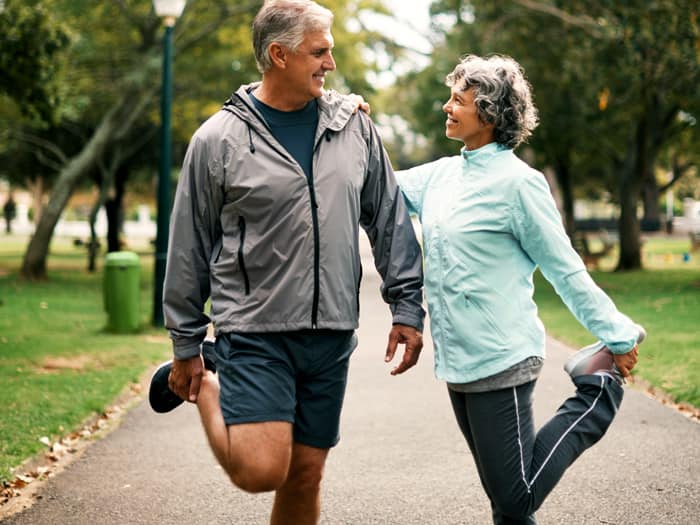
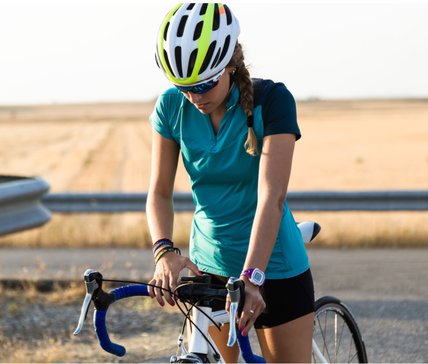

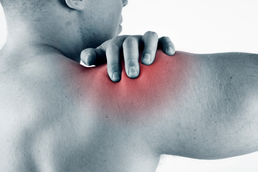
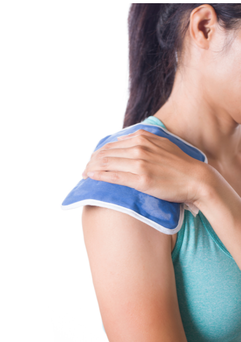
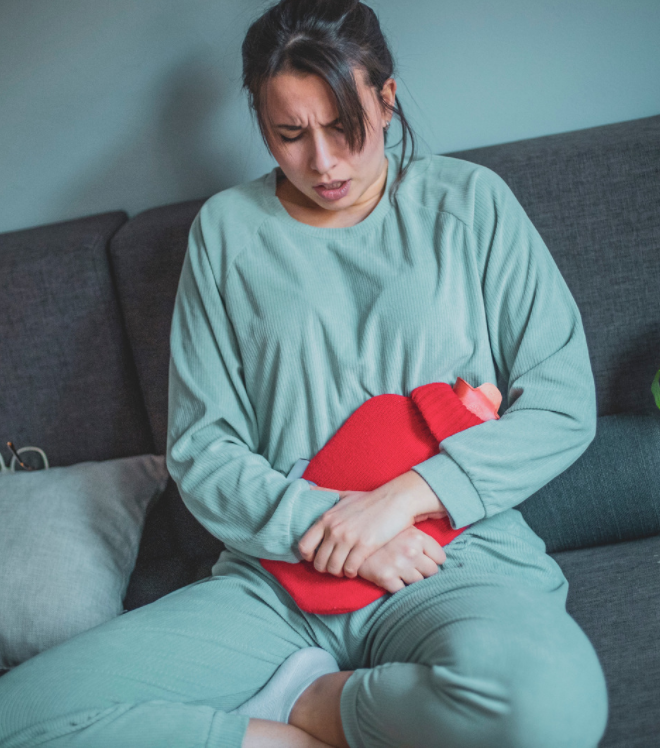
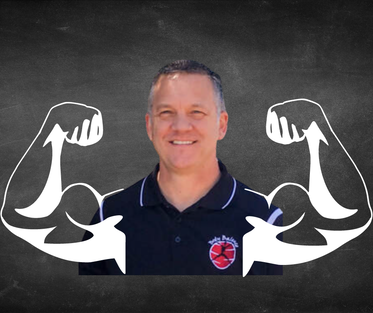

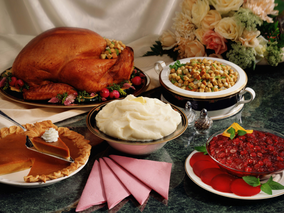
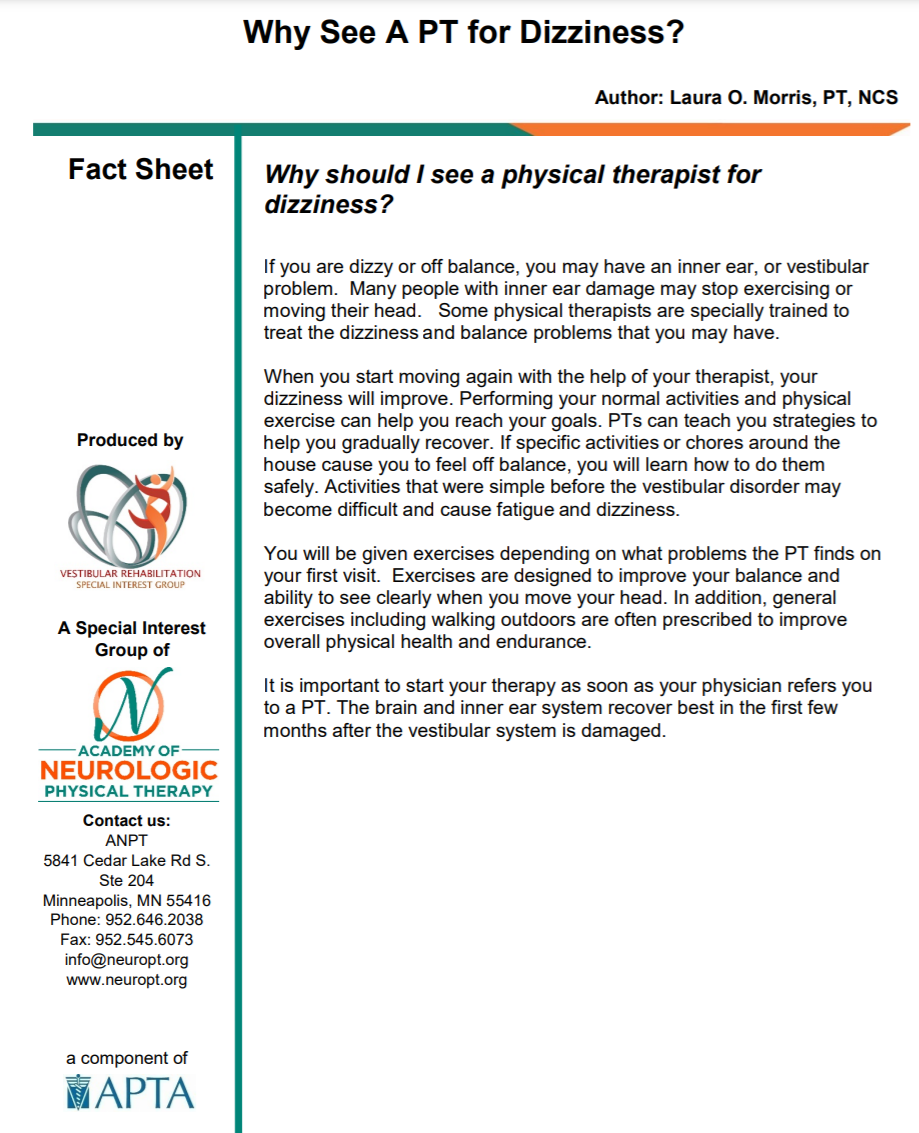
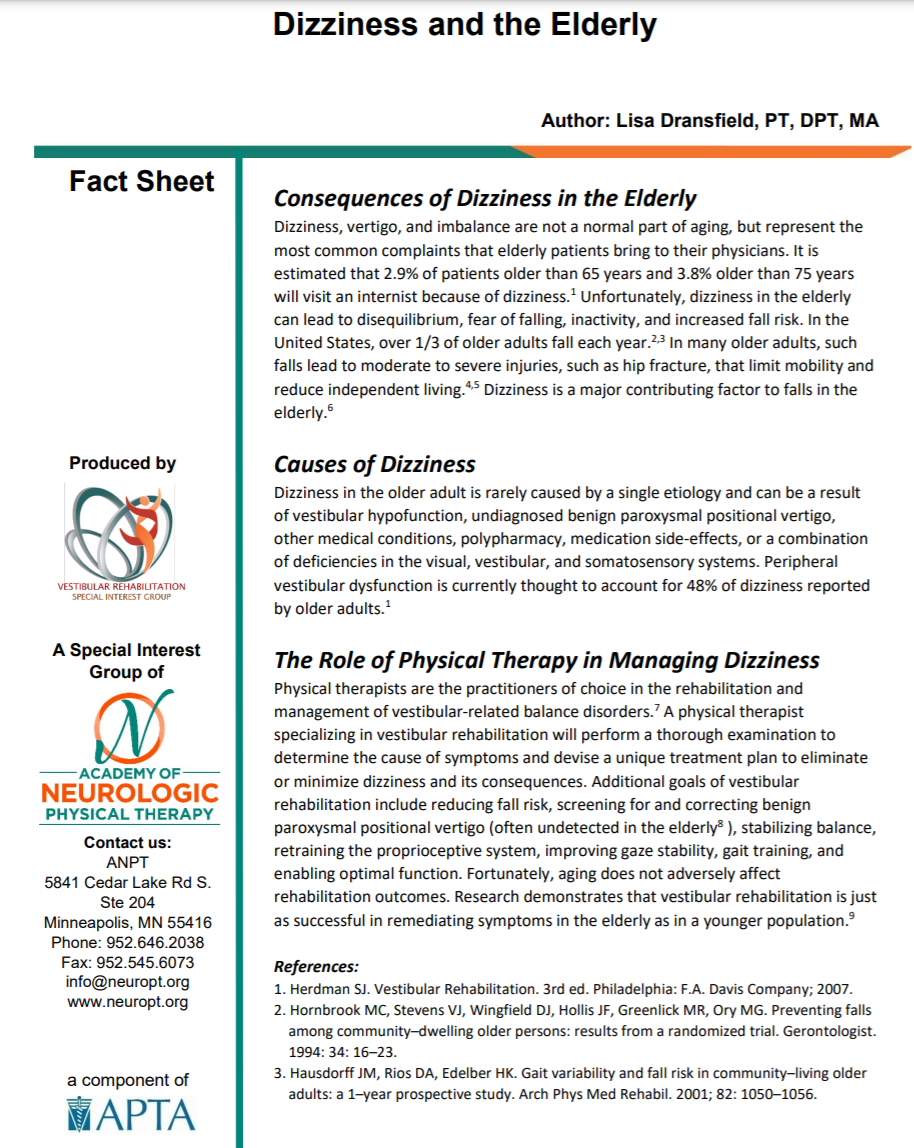
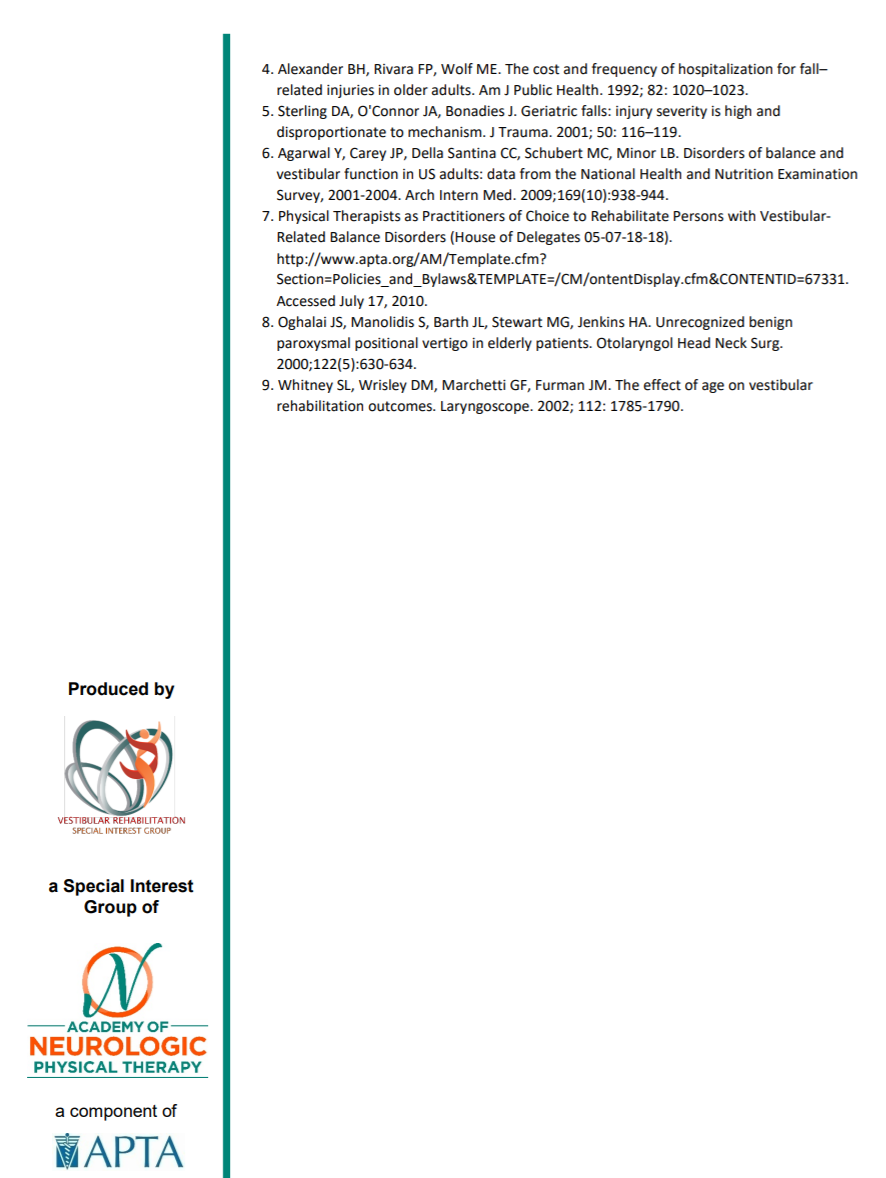
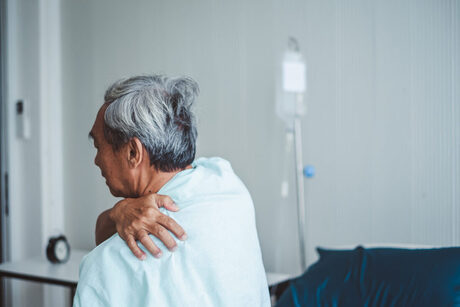
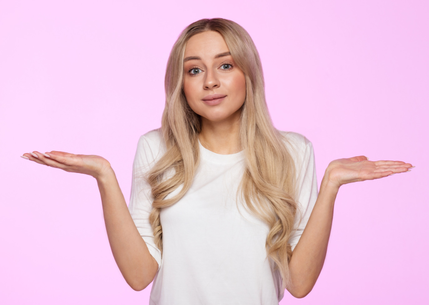
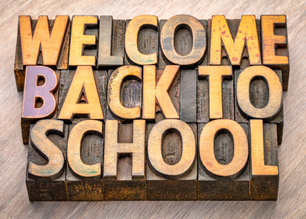

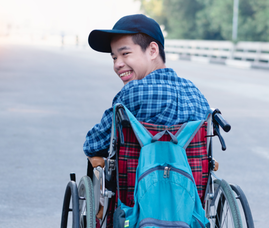
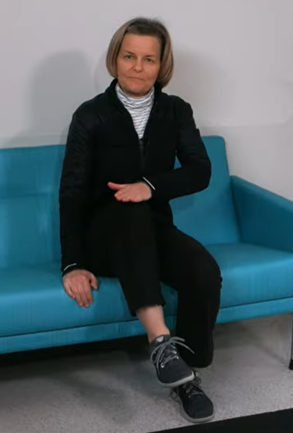
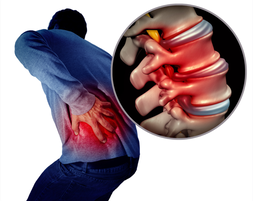
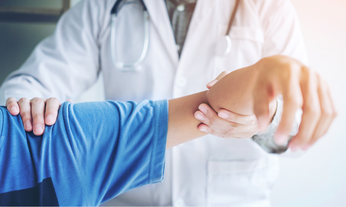
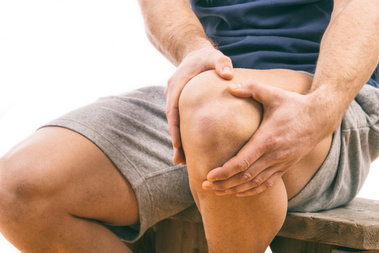
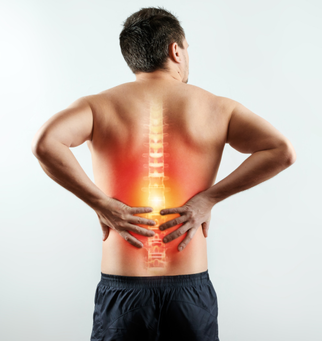
 RSS Feed
RSS Feed